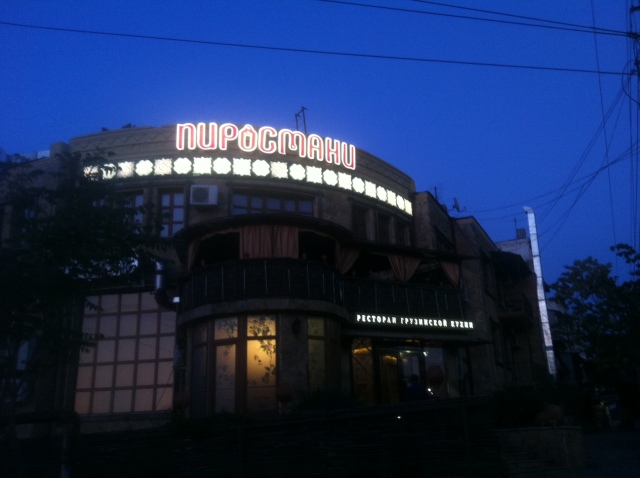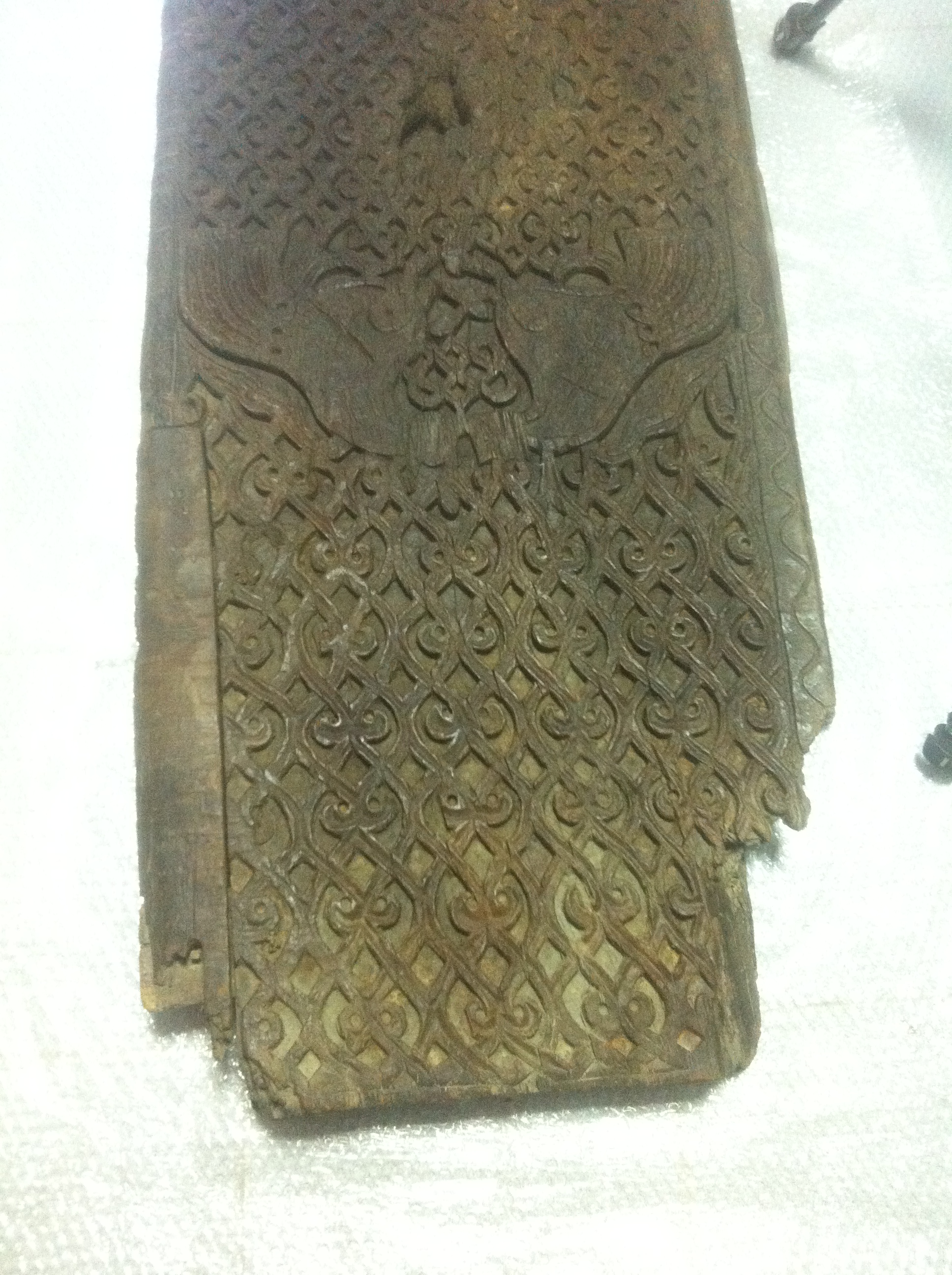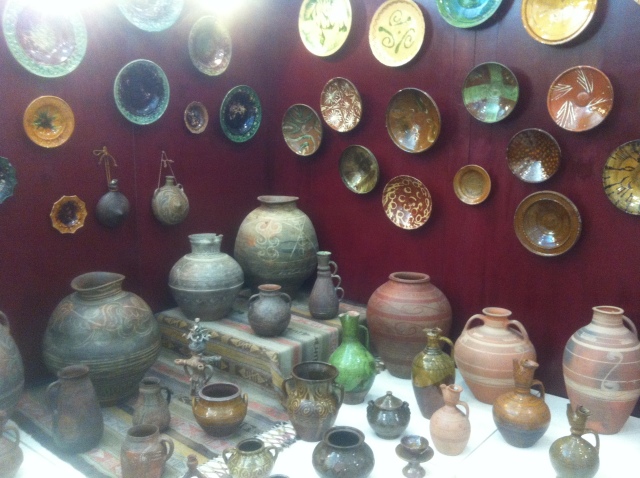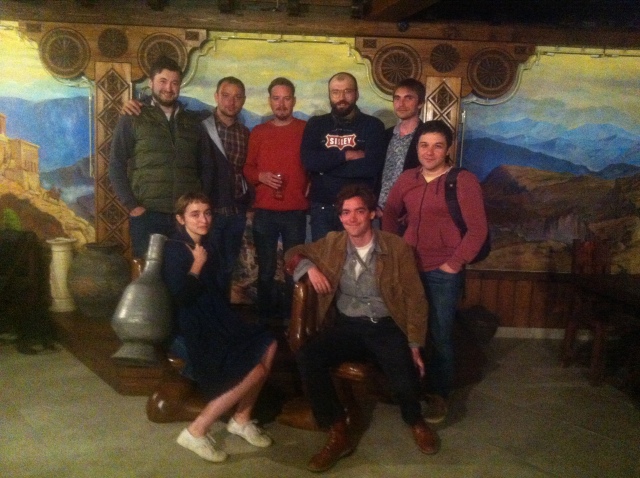Our second day started off with more running errands around Makhachkala, picking up equipment and trying to avoid the cavalcade that escorts the President of Dagestan to his office everyday, and in the process stoping the traffic along the central road of the city for half an hour. It is difficult to gauge the reality of threats to safety in a place that is on the red list of the Foreign Office website, but with Shamil and Gennady as hosts the question rarely poses itself. It is the first place I’ve ever been to that people have never (or say they have never) met a foreigner. At first Alex and I thought that people saying they were happy to meet ‘real’ Englishmen was a joke at our expense, but it turns out that we are indeed the stuff of BBC exports to Russia. The recent adaptation of War and Peace made it here which was a nice point of, if not conversation, then at least acknowledgement of shared TV experience. It was unclear whether they thought Alex or I should play Prince André or Pierre in a hypothetical Dagestani adaptation.
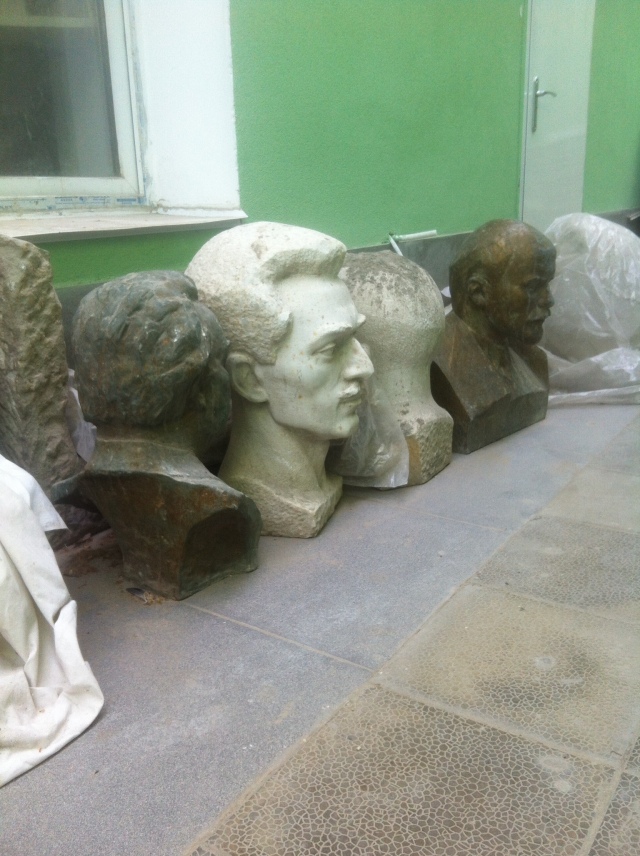
One of the questions that I haven’t yet satisfactorily answered is the relationship with Dagestan’s Communist past. Unlike Moscow, where most of the Soviet urban paraphernalia has been removed to one park in the outskirts, there are a number of statues of Communist era figures still erect – including a picture of Stalin in a bread shop. The day before I arrived, the 9th of May, is Russia’s Victory in Europe day and the evidence of the commemorations were very strongly in evidence in both Moscow and Makhachkala. There is a strong sense that the military might of Soviet Russia remains a hugely important source of national pride.
Back at the Museum, the scanning has been following the usual routine of a sense of crisis whilst the exact settings for the surface are calculated, followed by the extreme relief of when the results start to come together. Reporting on the process of taking hundreds of photographs of a carved door is of fairly specialised interest, so I can focus on lunch and dinner. Gennady took Eva and I to sample one of the most famous Dagestani delicacies: Chudu (phonetically spelt). This dish is somewhere in between a crepe and a pizza, a thin circular doughy pastry that is fried with a number of different fillings in the middle (a minced lamb, a puffy cheese and a spinach variety were all sampled) and a ground powder of toasted rye seeds on top. Its hot and greasy and is eaten rolled up. The soup that preceded it was a sorrel borsch that the waitress was convinced I needed in a full rather than half portion as I look so thin… Hopefully this is still the case at the end of the trip, though it seems increasingly unlikely!
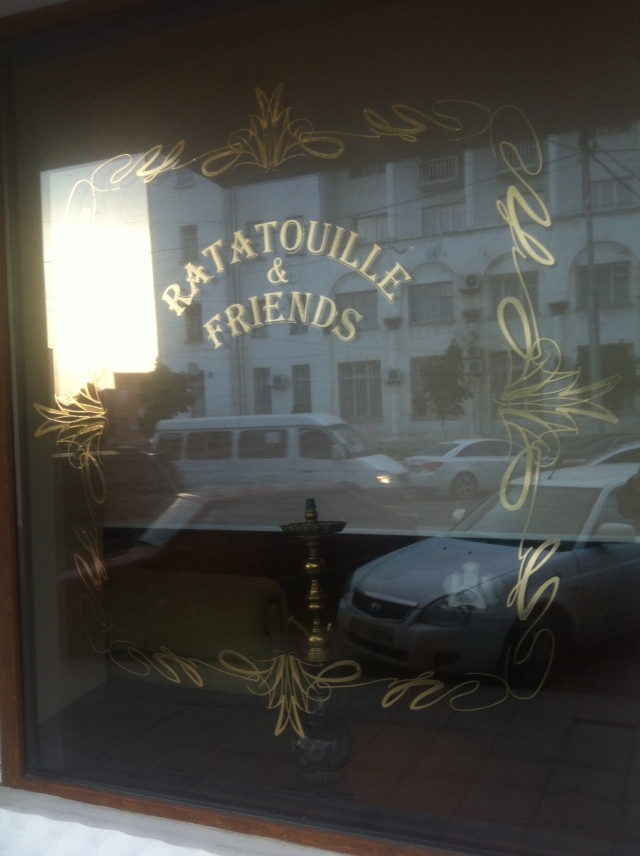
We didn’t visit Ratatouille and Friends but I enjoyed imagining the story that led to its being named. Instead we had dinner at another Dagestani restaurant, this time seated within a ‘Kabinka’ – a little cabin within the restaurant that we all piled into for more chudu followed by a slightly more intimidating looking dish. Rectangular bars of dumpling topped with beef sausages and mutton and washed down with cognac, the picture says all.
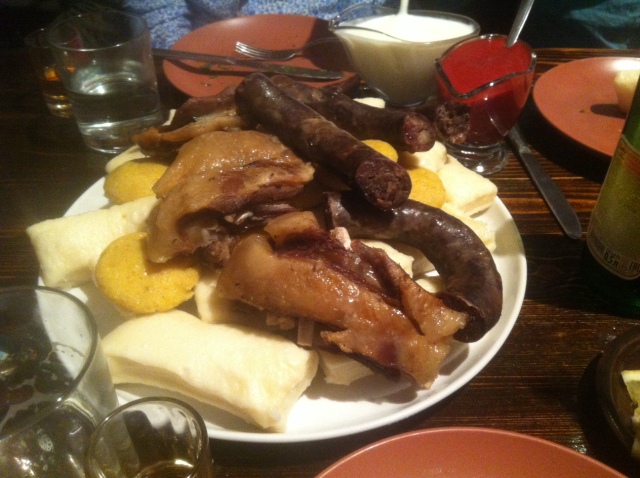
This post having unintentionally becoming dedicated to our culinary experiences, I’m going to skip the majority of the events of day 3 (more mechanical taking of photographs) to tonight’s dinner, at an enormous Georgian restaurant serving Hachapuri (again, phonetically interpreted spelling) another doughy circle, but this time topped with cheese and a fried egg. Tomorrow is the last day (for now) in MK. then on to the mountains!
